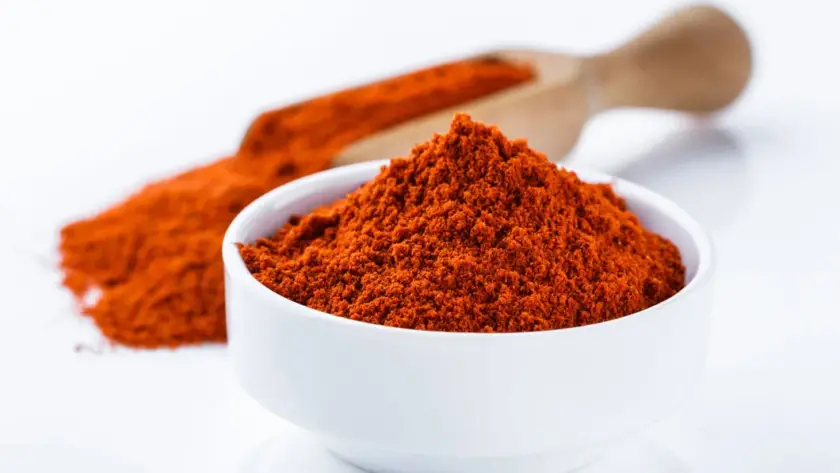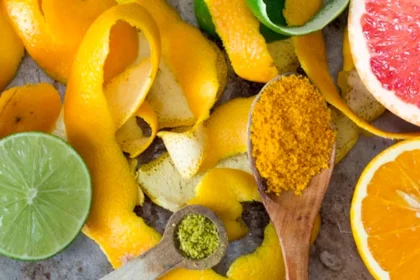In the culinary world, few spices possess the vibrant color, enticing aroma, and captivating flavor quite like paprika. Whether sprinkled delicately on a dish or used to add depth to a variety of cuisines, this versatile spice has found its way into kitchens across the globe.
Yet, despite its widespread popularity, a substantial number of people remain surprisingly in the dark about the origins of paprika and the numerous ways it can benefit our bodies.
Join us as we embark on a flavorful journey to uncover the rich history of paprika, exploring its cultural significance and shedding light on the remarkable health benefits it offers.
The Rich History Of Paprika
Paprika is deeply intertwined with the exploration, trade, and culinary traditions of various cultures throughout the world. Originally derived from the Capsicum annuum plant, which is a member of the nightshade family, paprika is made from dried and ground red bell peppers or chili peppers, depending on the variety.
Origins in the Americas
Paprika’s story begins in the Americas, where chili peppers have been cultivated for thousands of years. Native to Central and South America, chili peppers were a crucial part of the diet and culture of indigenous populations such as the Aztecs and Incas.
These early civilizations used chili peppers not only for their culinary properties but also for medicinal and ritual purposes.
Spanish Exploration
It was during the Age of Exploration that paprika found its way to Europe. Christopher Columbus is credited with introducing chili peppers to Europe upon his return from the New World in the late 15th century.
Initially, European explorers were intrigued by the spicy heat of these peppers, but they didn’t immediately recognize their culinary potential.
Hungarian Influence
The cultivation and popularity of paprika as we know it today owe much to Hungary. In the 16th century, the Ottoman Turks brought chili peppers to Hungary during their occupation.
Initially, these peppers were considered decorative plants. However, over time, Hungarian farmers began to experiment with different chili pepper varieties and cultivation methods, leading to the development of distinct and flavorful Hungarian paprika.
Spread across Europe
From Hungary, paprika gradually spread throughout Europe, gaining popularity in Spain, the Balkans, and other countries. Each region developed its unique variations of paprika, using different types of chili peppers and processing methods to create varying levels of heat and flavors.
Integration into Local Cuisines
As paprika spread, it became an integral part of local cuisines across the continent. In Spain, it played a significant role in creating iconic dishes like paella. In Hungary, it became an essential ingredient in goulash and various traditional stews. In the Balkans, it was incorporated into dishes like ajvar and cevapi.
Paprika in Asia and Africa
Through trade routes and cultural exchanges, paprika also made its way to Asia and Africa. In regions like India, China, and North Africa, chili peppers became integrated into local cooking, with varying degrees of spiciness and flavor profiles.
Paprika in Modern Times
Today, paprika is a staple spice in kitchens worldwide. It is not only valued for its taste but also for its vibrant color, which adds visual appeal to dishes. Additionally, paprika’s health benefits, such as its high levels of antioxidants and vitamins, have made it increasingly popular in the health-conscious culinary landscape.
Health Benefits
Paprika not only adds a burst of color and flavor to your dishes but also offers several health benefits. This versatile spice contains a variety of nutrients and bioactive compounds that can positively impact our bodies. Here are some of the potential health benefits of paprika:
- Rich in Antioxidants: Paprika is a potent source of antioxidants, such as carotenoids (beta-carotene, lutein, and zeaxanthin), vitamin C, and vitamin E. These antioxidants help neutralize harmful free radicals in the body, protecting cells from oxidative stress and reducing the risk of chronic diseases like heart disease and cancer.
- Supports Eye Health: The carotenoids present in paprika, particularly lutein and zeaxanthin, play a crucial role in maintaining eye health. These compounds have been associated with a reduced risk of age-related macular degeneration and cataracts, two common eye conditions that can lead to vision loss.
- Boosts Immune System: Paprika contains a good amount of vitamin C, which is essential for a healthy immune system. Vitamin C helps stimulate the production of white blood cells, which are crucial in fighting off infections and illnesses.
- Supports Cardiovascular Health: Some studies suggest that capsaicin, a compound found in paprika, may help lower blood pressure and improve blood circulation, promoting heart health. Additionally, paprika’s antioxidants can reduce inflammation, a risk factor for heart disease.
- Aids in Digestion: Capsaicin in paprika may have a mild stimulant effect on the digestive system, promoting gastric juices’ production and easing indigestion. It can also aid in reducing bloating and gas.
- Metabolism Boost: The spice’s capsaicin content is also thought to have a mild thermogenic effect, increasing metabolic rate and promoting calorie burning. This could potentially aid in weight management when combined with a balanced diet and regular exercise.
- Mood Enhancement: Some studies suggest that the consumption of paprika may have mood-enhancing effects. Capsaicin may trigger the release of endorphins in the brain, leading to a temporary boost in mood and feelings of well-being.
It’s important to note that while paprika offers numerous health benefits, these advantages are most effective when it’s part of a balanced and varied diet. Incorporating paprika into your meals can be a delicious and healthful way to enhance your overall well-being.
Different Types Of Paprika
Paprika comes in various types, each distinguished by its flavor profile, color, and level of spiciness. The different types of paprika are a result of the chili peppers used, the processing methods, and the regions where they are produced. Here are some of the most common types of paprika:
- Sweet or Hungarian Paprika: This is the most common type of paprika found in supermarkets. It is made from sweet red bell peppers that are dried and ground to produce a vibrant red powder. Sweet paprika has a mild, slightly sweet flavor with little to no heat, making it perfect for adding color and a gentle taste to dishes. It is commonly used in Hungarian cuisine for classic dishes like goulash and chicken paprikash.
- Smoked Paprika (Pimentón): This type of paprika is made from dried red peppers that are smoked over oak wood before being ground into a powder. The smoking process infuses the paprika with a distinctive smoky flavor, adding a rich and robust taste to various dishes. Smoked paprika comes in various intensities, including sweet, bittersweet, and hot. It is often used in Spanish and Mediterranean cuisines, adding depth to dishes like chorizo, paella, and roasted vegetables.
- Hot or Spicy Paprika: Made from hotter chili peppers, this type of paprika has a more pronounced heat compared to the sweet variety. It is available in different heat levels, ranging from mildly hot to very spicy. Hot paprika is commonly used in dishes that require some heat, such as spicy stews, chili con carne, and certain Mexican and Indian dishes.
- Paprika Blends: Some paprika blends are made by combining different types of paprika to achieve a specific flavor profile. For example, you might find a blend that combines sweet, smoked, and hot paprika to create a well-balanced and complex spice mix.
- Regional Variations: Various countries and regions have their unique variations of paprika, each reflecting local chili pepper varieties and processing techniques. Some notable examples include Spanish Pimentón de La Vera, which is renowned for its smoky flavor, and Turkish Paprika, often made from local red peppers that yield a distinctive taste.
When purchasing paprika, it’s essential to read the label and determine the type and spiciness level to ensure it fits your recipe’s requirements. Paprika is a versatile spice that can enhance the taste, color, and aroma of a wide range of dishes, making it a staple in kitchens around the world.
Check Out Star West Botanicals High Quality Organic Paprika In 3 Flavors
Sweet Paprika Chicken

4 boneless skinless chicken breasts – pounded to about ½ inch thickness
2 tablespoons brown sugar
1 tablespoon paprika
1 ½ teaspoons salt
1 teaspoon garlic powder
optional: fresh mango slices, lime wedges, fresh cilantro, rice
Instructions
Mix brown sugar, paprika, salt, and garlic powder.
Rub the spice mix generously all over each chicken breast.
Preheat a large pan over medium heat. Add Oil. Add chicken breasts to pan and cook 4-5 minutes each side or until cooked through and juices run clear. Serve with steamed rice, mango slices, lime wedges and fresh cilantro if desired.






